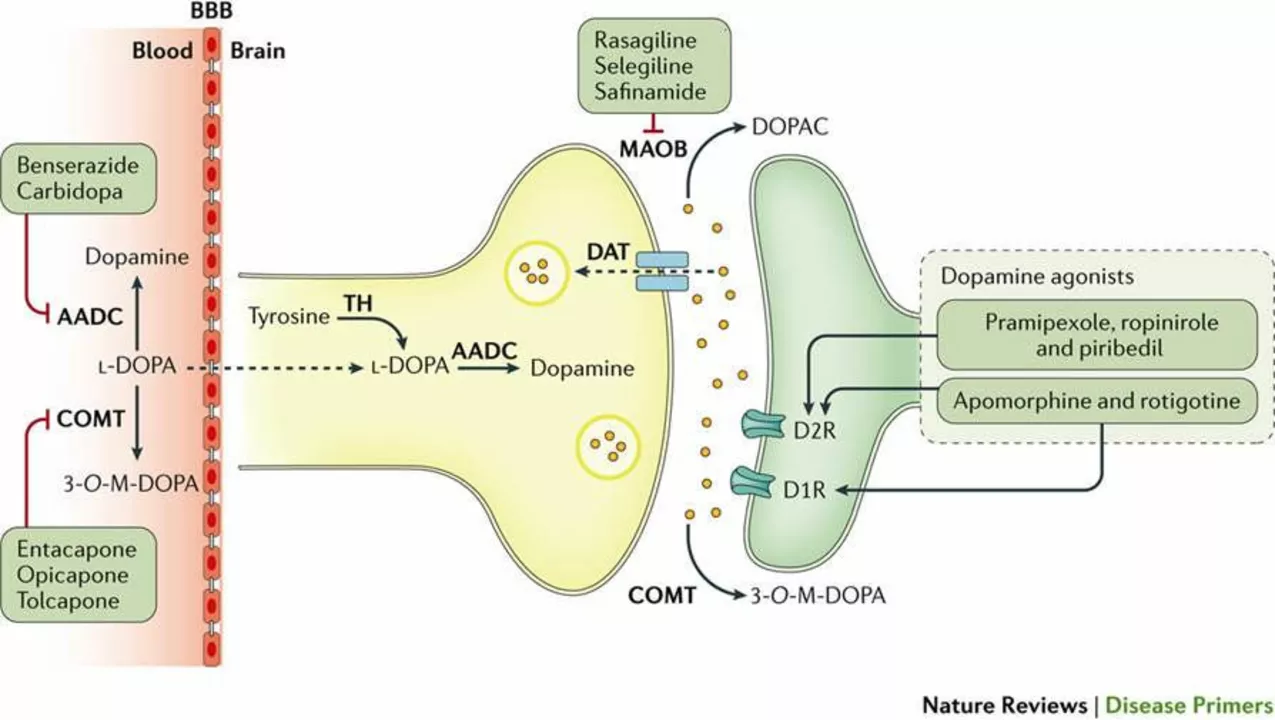Carbidopa‑Levodopa‑Entacapone: Practical Guide for Patients
If your doctor prescribed carbidopa‑levodopa‑entacapone (often sold as Stalevo), you want clear, useful advice—no fluff. This three‑part combo helps Parkinson’s symptoms by increasing dopamine in the brain and keeping levodopa working longer, which often cuts down on “off” time when symptoms return.
How it works: levodopa converts to dopamine and eases slowness, stiffness, and tremor. Carbidopa stops levodopa from turning into dopamine before it reaches the brain, so you get fewer stomach problems and can use lower levodopa doses. Entacapone blocks COMT, an enzyme that breaks down levodopa, so each dose lasts longer and moments of symptom return are smoother.
How to take it and everyday tips
Take exactly what your prescriber recommends. Consistency matters—same times every day keeps levels steadier. If you can, take doses 30–60 minutes before a big protein meal or at least one hour after; protein can slow levodopa absorption. Don’t crush or split tablets unless your pharmacist says it’s okay. If nausea shows up, try taking with a small snack or talk to your doctor about an anti‑nausea option. Track medication times and your symptoms in a simple diary—this helps your clinician fine‑tune doses.
Driving and heavy machinery: this medicine can cause drowsiness or sudden sleep episodes. If you feel very sleepy or have sudden sleep attacks, avoid driving and tell your doctor right away.
Side effects, interactions, and red flags
Common side effects include nausea, lightheadedness when standing (orthostatic hypotension), drowsiness, vivid dreams, and involuntary movements (dyskinesia). Entacapone may darken urine to an orange‑brown color—harmless but noticeable. Serious signs that need urgent care: severe confusion, hallucinations, high fever, very stiff muscles, fainting, or yellowing of the skin/eyes. These can point to rare but serious problems and need prompt attention.
A few interaction notes: avoid nonselective MAO inhibitors—combining them with levodopa can cause dangerous blood pressure spikes. Iron supplements and high‑protein meals can reduce levodopa absorption, so separate them by a couple of hours. Tell every provider and your pharmacist about all meds you take, including antidepressants, antacids, and herbal products. Alcohol and sedatives can add to drowsiness.
Practical safety: never stop this medicine suddenly—stopping abruptly can cause a severe condition. Keep pills in a cool, dry place and out of reach of children. Carry a current list of your meds and the exact product name and strength. If your “on” and “off” times change or new behaviors (like strong gambling urges) appear, contact your clinician—adjusting timing, dose, or adding other meds can help.
Want help at appointments? Bring your symptom diary, note times when meds wear off, list side effects, and ask whether dose timing or formulation changes might give smoother control. Small changes often make a big difference in daily life.

